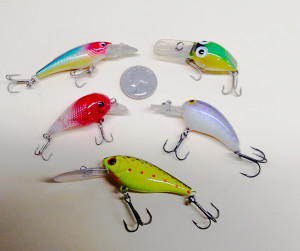By Chris Erwin
Winter has been holding on like a pit bull swinging a rope! I don’t know about you but I’m ready for it to be over. Just about when I think it’s going to turn around, we get another shot of bad weather. However, time is beginning to be on our side and a warm up can’t be far away. That’s what I keep telling myself anyway.
While we battle against the snow, the days are getting longer and the sun is getting stronger. We are over halfway through this month and March should produce some fishing opportunities, especially if you go after some of the fish that seem to ignore cold water. I am referring to the crappie, sauger, walleye or muskie. Bass can be very active in March but for most of us, bass fishing really begins once the water temperature reaches 50 degrees.

Back in the 70s almost everyone was eating their catch. It was B.A.S.S. that introduced the idea of catch and release. Ray Scott, (CEO of B.A.S.S) knew if his fishing members came to a location and removed a lot of fish, they were in for a fight with the local fishermen. This gave birth to the idea of catch and release. It has caught on all over the country when we are talking about bass fishing.
Crappie, walleye and sauger are still very popular with fishermen as table fare. I happen to like crappie as the fish I want to keep for eating. Crappie is a very mild-tasting fish due to the fact there is little blood in the filets of this fish. There is no red meat that needs to be removed as is the case with white bass, stripers or large catfish.
I bring this up because this fish will even take your offering through the ice. However, once we start getting some warm days you can focus one of your early trips on crappie. This should give you a good chance of success. As a bonus, you can put some of these great-tasting fish in your freezer.
Another little tip about crappie, once these fish begin to feed this spring they will move to shallow water. When this happens most people will fish with jigs and live bait. However, I have found it’s also a great time to cast the banks with a downsized crankbaits and light tackle. I have had excellent results using this method. Some of the largest crappie I have ever had the pleasure to catch came while fishing a baby “N,” by Bill Norman, casting sandy points in March using a 6’6” light action spinning rod rigged with eight pound fluorocarbon line.
Now is the time to get your gear ready. Look over your tackle and see if your reels need a good cleaning. Inspect your rods for broken eyes or other damage. In the upcoming, weeks I will go over how to repair the eyes on your rod. I will also, as I do each year, build a custom rod and show you how to build the complete rod. This year I will be building an MHX world-class blank into a custom-casting rod.
What is different this year is I will be making a video that will follow up on the articles showing you step by step how to build your own. I will cover how to spline a rod, how to figure guide spacing and how to build a custom handle.
I am a firm believer that the more you build your own, the more the fishing experience comes full circle. Building your own baits and fishing them on your own rod is a fulfilling experience. Fly fisherman have been teaching and passing down this view for years. I hope to expand on the many ways to enjoy this sport even when it’s snowing outside. Now is the time to get ready. Let’s do it together.



Be the first to comment